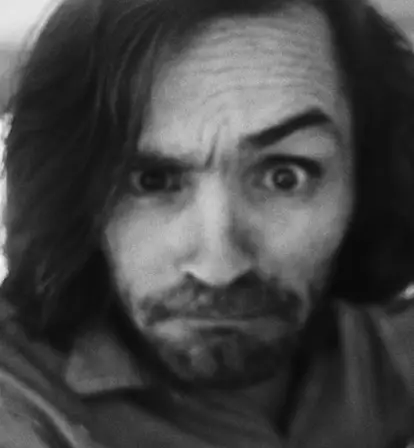Though cult leader Charles Manson was convicted of organizing nine murders in the summer of 1969, he maintained that he never ordered a single killing.
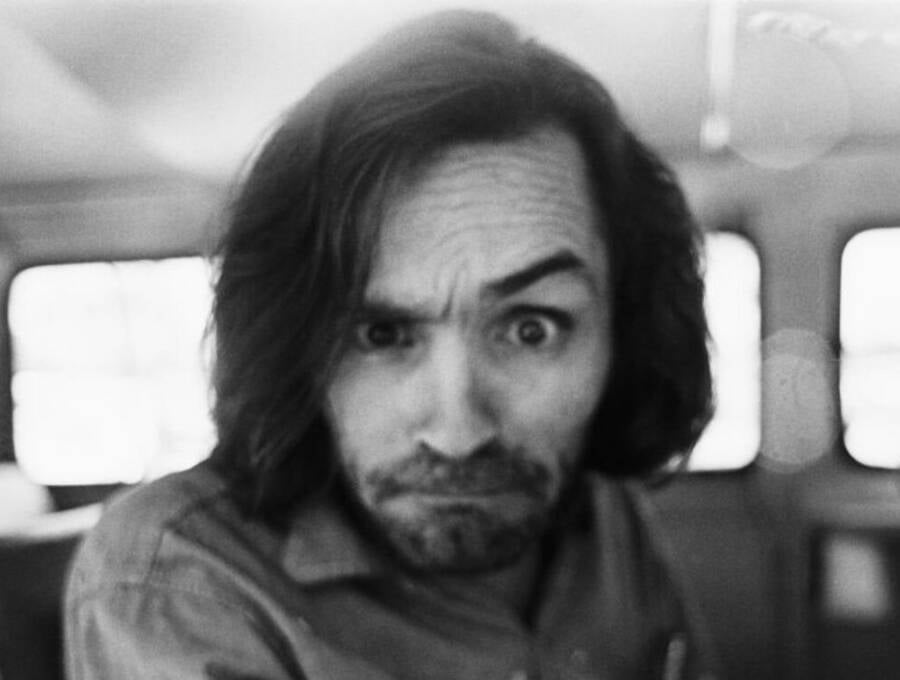
Michael Ochs Archives/Getty ImagesCharles Manson traveling to the courthouse in Los Angeles during his trial on June 25, 1970. Though he was convicted on nine murder counts in the Tate-LaBianca killings of August 1969, some evidence suggests that he may not have been as involved as the official narrative suggests.
On the night of August 8, 1969, four perpetrators arrived at 10050 Cielo Drive in Los Angeles and brutally murdered all four people inside as well as a teenager who happened to be passing through. But the most infamous villain in this blood-soaked story was one who was nowhere near the house that night, though he may have masterminded the entire gruesome affair — and his name was Charles Manson.
He soon became immortalized as a terrifying Svengali who’d manipulated the young murderers, part of the so-called Manson Family, into doing the unthinkable. And for years afterward, Charles Manson continued to hold a mythic grip on the darkest corners of the American psyche.
In 1973, four years after Charles Manson and the Manson Family perpetrated their series of murders that shook America to its core, directors Robert Hendrickson and Laurence Merrick released their documentary, Manson. For Merrick, it was a passion project. The most famous of those murdered in the summer of 1969, actress Sharon Tate, had once been Merrick’s student at his Academy of Dramatic Arts.
Despite concern expressed by some that not enough time had passed to digest the grisly crimes, Merrick’s attempt to understand who the killers were and what had really happened struck a nerve with audiences. Manson was a commercial and critical success, earning an Oscar nomination for Best Documentary.
Four years later, Merrick was found dead. He had been shot in the back of the head outside his academy. In the four-year investigation that followed, many (including the FBI) would ask whether or not Merrick’s one-time documentary subject, Charles Manson himself, could have organized yet another murder — this time from his death row prison cell.
While this may sound far-fetched today, to both the American public and law enforcement in the late 1970s, it felt terrifyingly plausible. Such was the power of Charles Manson, the boogeyman of an entire era in American history. From his troubled youth to the birth of the Manson Family to the Tate-LaBianca murders and their widely misunderstood aftermath, this is the full story of Charles Manson.

Los Angeles Public LibraryCharles Manson is led back to his cell during the penalty phase of his trial on March 23, 1971.
- The Tate-LaBianca Murders Turn Charles Manson Into An American Boogeyman
- A Boy With No Name: Charles Manson’s Early Years
- Manson Runs Away And Endures Repeated Abuse
- Charles Manson’s Last Chance At An Honest Life
- Manson’s Second Taste Of Squandered Freedom
- The Looming Shadow Over The Summer Of Love And The Birth Of The Manson Family
- How Charles Manson Created His Family
- The Beach Boys, Terry Melcher, And Other Brushes With Fame
- The Events Surrounding The Tate-LaBianca Murders
- Was Charles Manson Serious About “Helter Skelter” And Was He Truly Responsible For The Manson Family’s Murders?
- What Happened To Charles Manson? From Cult Leader To Cultural Icon
The Tate-LaBianca Murders Turn Charles Manson Into An American Boogeyman
America’s fear of Charles Manson orchestrating, or at least inspiring, a murder all the way from death row wasn’t entirely unfounded.
After all, in 1971, a group of Manson’s followers had stolen 140 guns and planned to hijack a plane and kill passengers until their demands for their guru to be released were met. However, they were caught before they could carry out their plan.

Los Angeles Public LibraryCharles Manson devotees with their heads shaved in protest of his conviction speak to the media. 1971.
And in 1975, Manson’s most loyal lieutenant, Lynette “Squeaky” Fromme, tried assassinating President Gerald Ford in California as part of an ersatz environmentalist protest inspired by Manson’s teachings about protecting the Air, Trees, Water, Animals (ATWA). Fromme pulled her gun on Ford from a mere two feet away, but it misfired and her attempt ended with her immediate capture by the Secret Service.
But while the legend of Charles Manson was bolstered by the plots hatched after his capture, it’s the events that led to his capture that first cemented that legend. These events made Manson an entire nation’s boogeyman first unfolded in August 1969. Known as the Tate-LaBianca Murders, these two nights left seven people dead, and to hear some tell it, were the final nail in the coffin for the idealism of America’s late 1960s counterculture.
On the night of August 8, a group of Manson’s followers led by Charles “Tex” Watson stormed the Los Angeles mansion of film director Roman Polanski and his wife Sharon Tate, killing the pregnant young actress and three of their friends while Polanski was out of town.

Silver Screen Collection/Getty ImagesThe most famous of the Manson Family’s many victims, Sharon Tate was brutally murdered inside her Los Angeles home at 10050 Cielo Drive on August 9, 1969.
The next night, the Manson Family butchered middle-aged businessman Leno LaBianca and his wife Rosemary inside their Los Angeles home.
In both cases, corpses were left mutilated and messages were painted on the walls with the victims’ blood — phrases like “Death to Pigs” and the infamous “Healter Skelter” [sic].
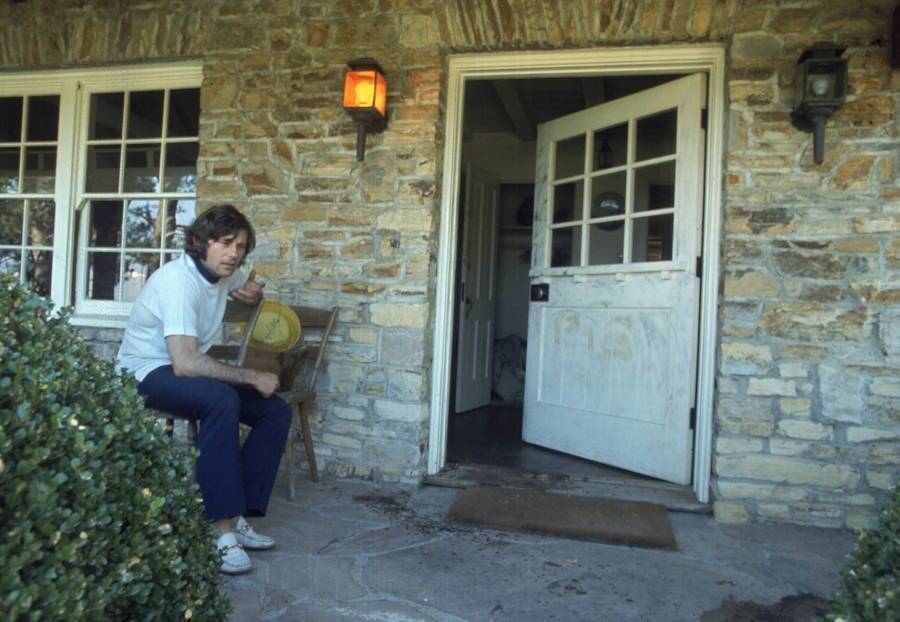
Julian Wasser/The LIFE Images Collection/Getty ImagesRoman Polanski sits on the blood-spattered porch outside his home soon after his wife, Sharon Tate, and unborn child were murdered by the Manson Family alongside some of the couple’s friends. The word “PIG” can still be seen scrawled on the door in his wife’s blood.
Perhaps what was most frightening of all, however, was that Charles Manson himself had not actually killed anyone. Instead, as both prosecutors and the media would soon tell it, he had a Svengali-like power over people. He was capable of turning his teen and twenty-something followers into violent slaves.
He was thus the perfect poster child for parental fears about what might become of their rebellious flower children, or, as President Richard Nixon put it in a speech during Manson’s trial, the young generation’s tendency to “glorify and make heroes out of those who engage in criminal activities.”
Many things to many people, Charles Manson has been called a deranged lunatic, a proletariat hero, God, the Devil, and Jesus Christ’s second coming depending upon who you ask. But, in truth, who was Charles Manson and how did he earn his chilling place in American history?
A Boy With No Name: Charles Manson’s Early Years
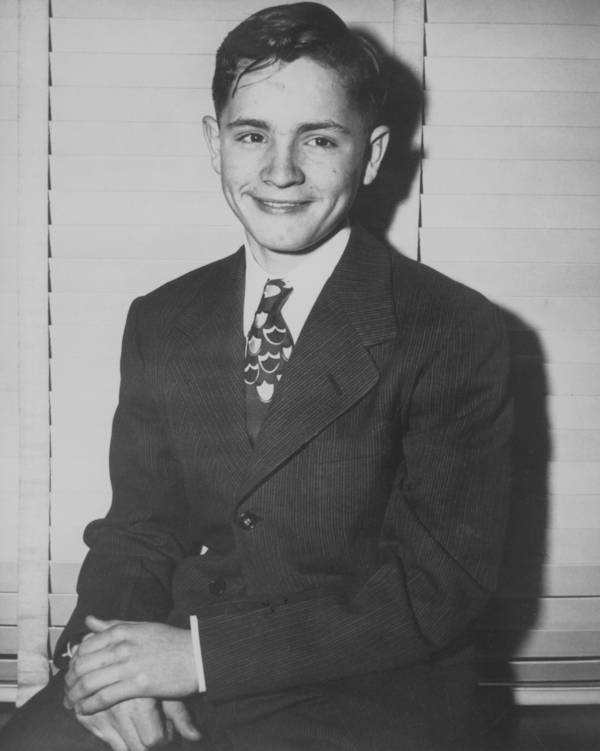
Bettmann/Getty ImagesCharles Manson as a child. 1947.
First known as “No name Maddox” thanks to a 16-year-old mother who neglected to give him a proper name, the boy who would become Charles Manson was born in Cincinnati, Ohio in 1934. His mother, Kathleen Maddox, had been seduced by local laborer and conman Colonel Walker Henderson Scott who had allowed the younger Maddox to think he was an Army officer instead of a lowlife.
Manson likely never met his father, but his mother married another laborer named William Eugene Manson shortly before the boy’s birth. The couple divorced before Charles Manson was three years old, however, with William citing Maddox’s drinking and “gross neglect of duty.”
However, in his later years, Manson remembered his mother fondly, calling her a flower child of the 1930s.
“If I could have picked her,” Manson said, “I would have. She was perfect! In doing nothing for me, she made me do things for myself.”

ABC/YouTubeCharles Manson’s mother Kathleen Maddox in 1971, then remarried as Kathleen Bower.
Perfect or not, Maddox no more settled down after her divorce than she had after her son had been born. According to one family story, a local waitress who wanted children said she would buy little Charles Manson from Maddox if she could. Maddox responded, “A pitcher of beer and he’s yours,” leaving her son behind after she polished off her drinks.
Though such a sale never came to pass, separation was the normal state of things between young Charles Manson and his mother. In 1939, following her involvement in a drunken gas station robbery, Maddox was sentenced to five years imprisonment in West Virginia, leaving Manson to be raised by his religious grandparents until he was eight.
He would later remember the moment his mother returned home as the happiest of his entire childhood, but their reunion would not last. In 1947, following a conversation with her latest boyfriend about how he couldn’t “stand that sneaky kid” of hers, Maddox pleaded before a judge that she could not provide for her son and had him declared a ward of the state.
Sent to the Gibault School for Boys in Terre Haute, Indiana, Charles Manson enjoyed only periodic visits from his mother, who always emptily promised that he could come home soon. When, after a few months, he escaped from school and surprised his mother on her doorstep, however, Maddox drove her son right back to Terre Haute, where his antisocial tendencies began to grow.
Manson Runs Away And Endures Repeated Abuse
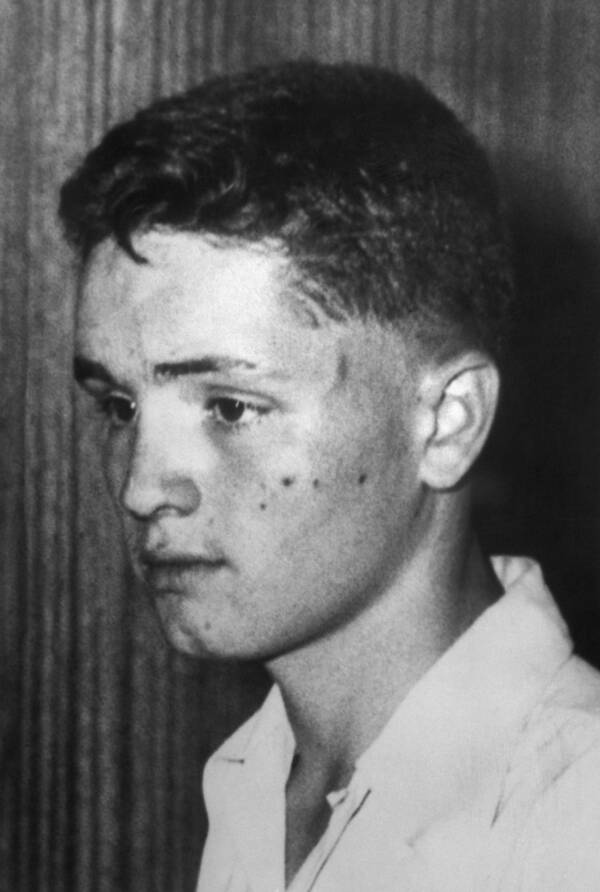
Bettmann/Getty ImagesCharles Manson at age 14.
After fleeing Gibault, Charles Manson continued to run away, but this time he tried his hand at homelessness in Indianapolis. Falling in with a group of “bums, winos, and hobos,” he took up petty theft before moving on to burglary. Caught breaking into a local grocery store by Indianapolis police after his mother refused to take him back, Manson was sent to another reform school located on a farm — but this one was much worse than the first.
By his recollection, it was while working in the dairy shortly after his arrival that a group of older, larger boys pinned him down while he struggled. Two managed to rape him before an authority figure arrived, telling the boys, “You know I don’t allow any wrestling” before telling Manson to “wash [his] face and stop crying.”
A few nights later, after curfew, Manson stole a heavy window crank and snuck over to the first boy’s bed while he was sleeping. After beating him bloody, he drew the blankets over his victim’s head and stashed the crank beneath his other rapist’s bunk. The boy survived and Manson was never caught, but he had gained a taste for violence. And when he escaped the school again a year later, he stole a car, several shotguns, and committed a series of armed robberies.
Soon picked up for transporting stolen property over state lines, Manson landed in federal custody in Washington, D.C. in 1951. The conditions in prison were reportedly better than the ones he had endured in reform school, but the attitudes and lessons he picked up in Indiana came with him. At 17, his first chance at parole was revoked after he was caught raping another inmate while brandishing a razor blade.
Charles Manson’s Last Chance At An Honest Life
When he was finally paroled at age 19, Charles Manson discovered he could not easily find a job and after so long in captivity, he could barely even relate to regular people either. This changed somewhat when, while playing cards at a local casino in 1954, he caught the eye of a 15-year-old coal miner’s daughter named Rosalie Jean Willis. After some nervous flirtation, their brief courtship rapidly progressed to dating and then marriage.
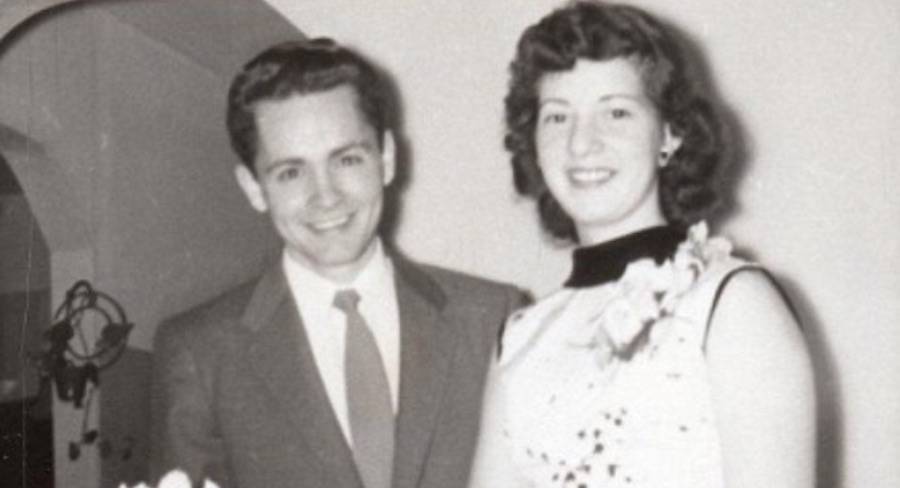
Public DomainCharles Manson with wife Rosalie Willis. Circa 1955.
Although Manson claimed his love for Willis could have kept him away from a life of crime, the couple’s desire for more than what his salary working as a janitor could provide and the approach of their first child pushed Manson back to what he knew best. Making contact with local mobsters, he was offered $500 to drive and deliver a stolen car to Florida. When he arrived, his client gave him $100 and told him to take it or leave it.
Furious, Manson waited for a few hours, stole the car back, drove to the state line, and abandoned the vehicle. His return to West Virginia was short lived. Aware his former partners were plotting revenge, Manson stole another car and fled with his wife for California.
Not long after their arrival, Charles Manson was arrested and sentenced to three years at the Terminal Island prison outside Los Angeles for car theft. Although he claimed, once again, to want to go “straight” upon his eventual release, Willis lost her resolve to continue their relationship.
When Charlie Manson Jr. was born in 1956, she brought the boy to visit his father in prison semi-regularly, but as time passed, the visits dwindled down to letters.
Then, those stopped too. Soon after learning that Willis had left the state with a trucker and taken their son with her, Manson attempted to escape from prison by stealing a car and a maintenance uniform before he was caught trying to cut the chain-link fence.

Wikimedia CommonsCharles Manson’s booking photo at Terminal Island. 1956.
At this point, whatever aspirations Charles Manson might have had to live an honest life fell away. He decided to turn his remaining time at Terminal Island into a criminal trade school, falling in with an older pimp who taught him the ropes of the world’s oldest profession.
The young man who’d been abandoned by both his mother and his first wife thus began trying his hand at a trade whose success relied on getting women to “love” him enough to do anything for him.
Manson’s Second Taste Of Squandered Freedom
Upon his release in 1958, Charles Manson found a woman named Leona “Candy” Stevens he thought he could work with in his new path as a pimp. However, he also fell in love with her. The night after her first job, Manson claimed to be wracked by guilt, insecurity, and jealousy but nevertheless forged ahead with her both personally and professionally. Manson married Stevens in 1959 and she gave birth to his second son, Charles Luther Manson, that same year though she was working for him.
Despite finding several women to work for him, Manson was low on money and was soon caught with a forged check for $37.50. Granted mercy by the court, he was told that any further crimes would put him back in jail for 10 years. That might have sobered most people, but not Charles Manson.
Hoping to make money off of lonely men at business conventions, Manson and his harem headed to New Mexico, and in the process violated the Mann Act against sex trafficking by taking the women across state lines, in a stolen vehicle no less. After one of the women was caught and started talking, Manson fled for Mexico, where he claimed to have trained as a matador and eaten psychedelic mushrooms with Yaqui Indians. While the veracity of these details is suspicious, it is possible that Manson’s first hallucinogenic experiments occurred around this time.
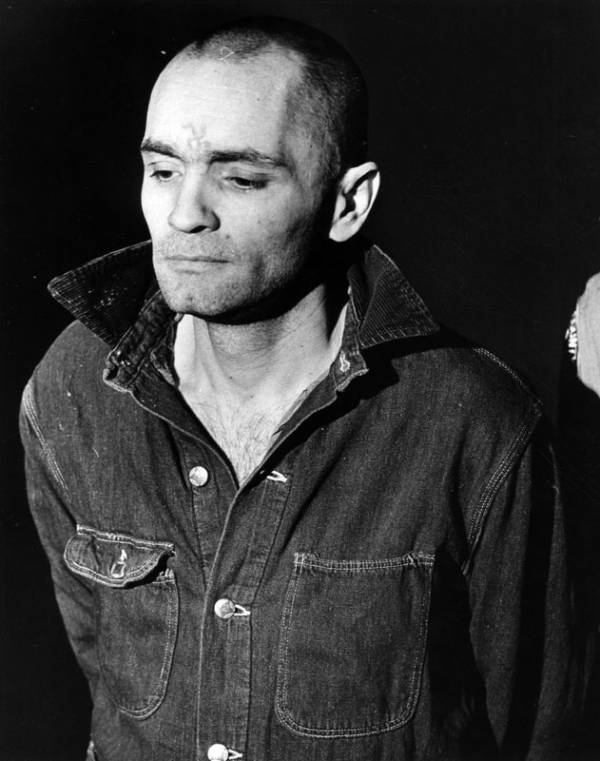
Los Angeles Public LibraryCharles Manson during his trial, awaiting the verdict. March 28, 1971.
Arrested by Federales and delivered to American authorities in Laredo, Texas in 1960, he told the judge he could not explain his activities in Mexico. “I don’t remember too much right now,” he said, as he’d been “a little confused” for several weeks.
Sentenced to 10 years’ incarceration, his time split between McNeil Island in Washington State and Terminal Island, Manson began to pursue music, tutored by various other inmates including Alvin “Creepy” Karpis of the infamous Ma Barker gang of the 1930s. Music became his focus and outlet, occupying all his free time save for his study of psychology and Scientology. But music was also his crutch. Thinking about the future, he began to imagine himself as a professional musician, a rock star.
Deep down though, Manson seemed aware that this plan was little more than a fantasy. Finally paroled in 1967 (four years after Stevens was granted a divorce from him), on the way out of prison, Charles Manson asked a guard to let him stay.
The Looming Shadow Over The Summer Of Love And The Birth Of The Manson Family
Thirty-two years old and having spent more than half that time in captivity, the newly-paroled Charles Manson was a man out of step with the times and caught off guard by how much the world had changed while he was inside. He expressed amazement when a truck driver giving him a ride soon after his release began to openly smoke marijuana in traffic.
After arriving in San Francisco, his first audition in the music business once again illustrated just how out of step he was. When he finished playing, the manager told him that he sounded alright but his music was stuck in the 1950s.
Still, despite all of this, California and especially San Francisco at the height of the Summer of Love proved to be a strange kind of paradise for Charles Manson. How else, after all, can one explain his rise (or fall) from a homeless, shoe-shining street musician to a murderous cult leader in less than two years?
The exact timeline of Manson’s activities between his release in 1967 and his capture in October of 1969 is uncertain, but various details and vignettes are known.
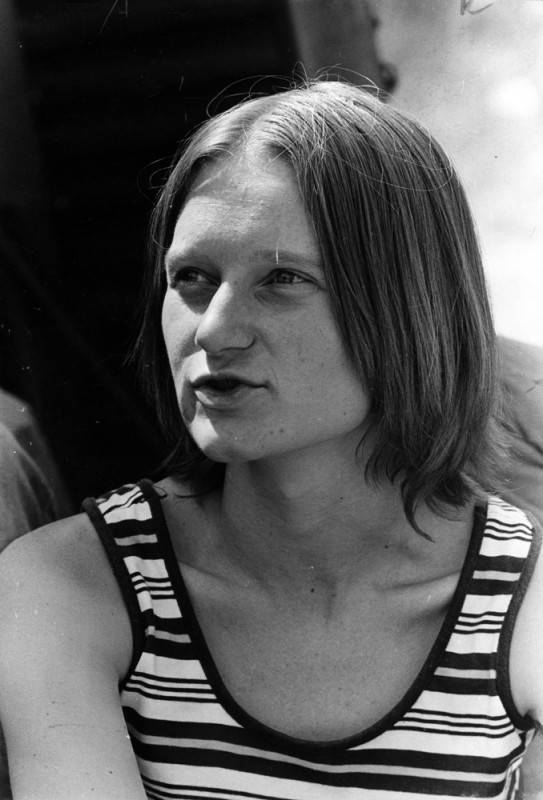
John Randolph Haynes and Dora Haynes FoundationA young Mary Brunner, the mother of one of Charles Manson’s children.
Shortly after his arrival in San Francisco, he had his first taste of LSD at a Grateful Dead concert. Not long after that, he met and moved in with Mary Brunner, a young college librarian who offered him a place to stay for a few nights. Manson accepted, and then never left.
When, in short order, their relationship turned sexual and Brunner learned that Manson was still sleeping with other women; he told her, “You don’t belong to me and I don’t belong to you.” In some ways, this would serve as the fundamental core of Manson’s message, as well as the Ethos of “The Family,” of which Brunner was the first member.
Along with the heavy use of LSD, sex seems to have been the primary means with which Manson recruited followers into what was quickly becoming a cult. According to one source, while 18-year-old runaway Lynette “Squeaky” Fromme sat crying on the street, Manson approached her with the line, “I am the God of fuck” and not long afterward she became his second follower.
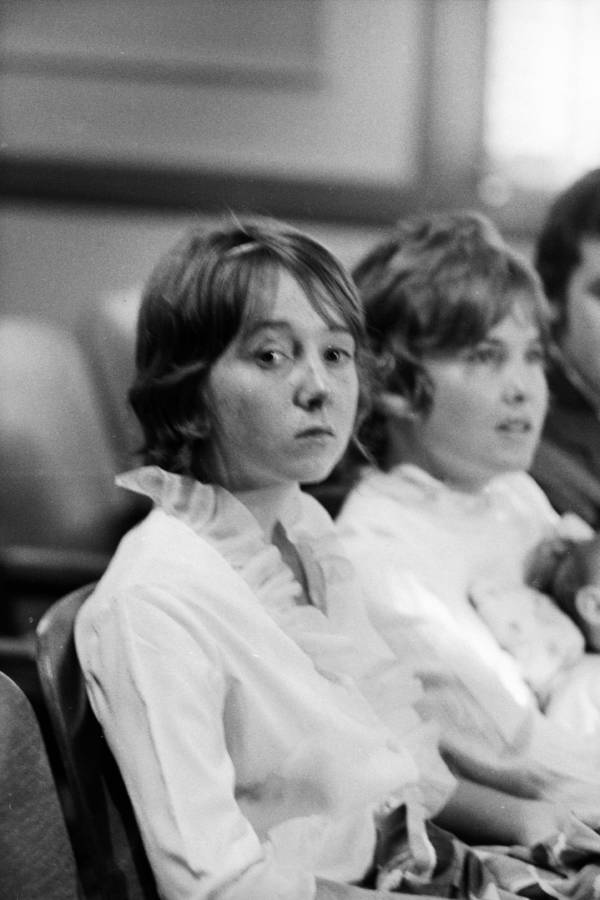
Getty ImagesSqueaky Fromme and fellow Manson follower Sandra Pugh sit in court during a preliminary hearing for Charles Manson.
According to the story later put forth by prosecutors, Charles Manson was indeed a skilled manipulator who broke down “normal,” middle-class youths with sex, drugs, and deluded diatribes until they were his brainwashed slaves. On the other hand, as Manson himself once put it to a friend in prison, “I am a very positive force… I collect negatives.” The truth may very well lie somewhere between the two.
How Charles Manson Created His Family
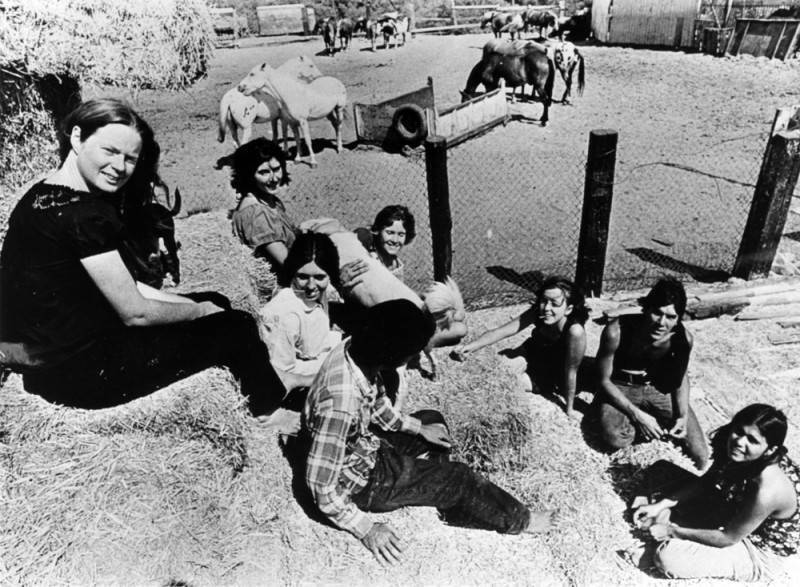
Michael Haering/Los Angeles Public LibraryMembers of the Manson Family at the group’s makeshift home at Spahn Ranch outside of Los Angeles.
In the book Manson in His Own Words, Charles Manson said there was no “family” and that he and most of his followers hated the word because it reminded them too much of their home lives.
As Manson saw it, he had an almost serendipitous ability to find people at a crossroads in their lives and “help them.” The young people who joined him, Manson said, had been cast aside by society, just as he had been. The answer that he believed he offered them was freedom from the illusions that enslaved them: their beliefs about people, the world, and themselves. By ridding them of these delusions and their egos, he claimed that he helped them to find real “freedom.”
Although he repeatedly emphasized to his followers both that they should be their authentic selves and that everyone in the group coexisted as one being, these sorts of semi-mystical platitudes take on a different character coming from Manson’s mouth. Leaving aside, for a moment, his past career as a pimp and professional manipulator of women, if you are Charles Manson and Charles Manson is you, is your will different from his? Will he allow you to act of your own free will, or, even worse, will you convince yourself that you want what he wants in order to live the teachings and reap the rewards he’s promised?
Add to this equation his greater age and experience over his followers as well as untold amounts of 1960s-strength LSD and Manson’s ability to achieve mastery over his flock, and it’s perhaps no longer such a mystery.

Bettmann/Contributor/Getty ImagesManson Family members (from left to right) Susan Atkins, Patricia Krenwinkel, and Leslie van Houten in custody. August 1970.
This explanation makes sense for most of the “Manson Family” members: Patricia Krenwinkel, Susan “Sadie” Atkins, Charles “Tex” Watson, Linda Kasabian, Leslie van Houten, and others who were lured in by the promise of guidance or just a really good time.
But, even by Charles Manson’s own recollection, the recruitment of Ruth Ann Moorehouse is indisputable evidence that Manson could be every bit the monster that prosecutors would later claim. After meeting her father, Rev. Dean Moorehouse, while hitchhiking, Manson earned an invitation to dinner, where he took a liking to both Moorehouse’s piano and his daughter.

Michael Haering/Los Angeles Public LibraryManson Family members — including Ruth Ann Moorehouse (far right) — at a cave in Spahn Ranch.
Told “whatever is mine is yours,” Manson soon returned to the Moorehouse home and talked the reverend into trading the piano for a Volkswagen Bus and then giving that Bus to Manson.
The first thing Manson did with this bus was take Ruth Ann to Mendocino, where, claiming “I was just as much a child as she was,” he seduced and raped the 14-year-old. Before leaving town for Los Angeles in pursuit of his musical dreams, Manson told the girl that she should join him when she was old enough or otherwise able to.
Within a week, she had emancipated herself from her parents, married a bus driver, left her new husband, and run away to meet Manson in San Jose. When the reverend arrived along with an armed friend to demand his daughter back, Charles Manson slipped him LSD and delivered a sermon of his own about how “Children grow up faster these days” before sending the pair away.
The Beach Boys, Terry Melcher, And Other Brushes With Fame
It was Charles Manson’s power over his “girls” that gave him access to and power over other people. For instance, in the summer of 1968, The Beach Boys’ drummer Dennis Wilson was driving down the road one day in California and noticed a pair of attractive women hitchhiking whom he had picked up once before. The second time, he brought them back to his mansion for sex, drugs, and other amusements.
Afterward, he left for the recording studio and didn’t return until 3 a.m. When he did, the two women were there — but so was a man.
Upon seeing the man emerge from his back door, a frightened Wilson asked if the stranger planned to hurt him. “Do I look like I’m going to hurt you, brother?” the stranger replied, before falling to his knees and kissing Wilson’s feet. That man was, of course, Charles Manson, and that exchange marked the beginning of a drug-addled, sex-fueled, guru-disciple relationship between the two.
Asked about this period after Manson’s arrest, Wilson later told Rolling Stone, “As long as I live, I’ll never talk about that.” In an interview with Rave magazine in 1968, however, he was more effusive. Referring to him as “The Wizard,” Wilson said, “Sometimes… he frightens me, Charlie Manson… says he is God and the devil. He sings, plays and writes poetry, and may be another artist for Brother Records,” referring to the Beach Boys’ record label.
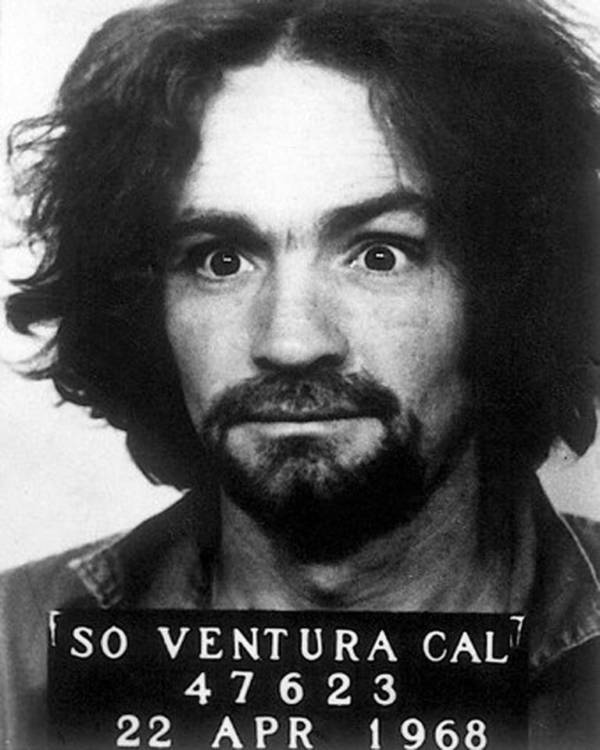
Wikimedia CommonsCharles Manson’s 1968 mugshot.
Although the infatuation ended with Manson and his family stealing upwards of $100,000 from Wilson in various ways, there was a brief moment where it looked like the Beach Boy was finally going to be the budding cult leader’s shepherd into the music business. Manson even recorded several songs at Wilson’s home studio and the latter actually got The Beach Boys to record a Manson composition called “Cease to Exist” (retitled “Never Learn Not to Love”) by passing it off as his own writing.
Unsurprisingly, Manson was not happy about the theft. When, in 1983, Dennis Wilson died in a drunken drowning accident, Manson remarked, “Dennis Wilson was killed by my shadow because he took my music and changed the words from my soul.”
Despite the bitter end to his brief relationship with Wilson, Manson managed to come close to his dream of rock stardom two more times. Put in touch with Terry Melcher, the Universal Records producer and son of actress Doris Day, Manson impressed the man less with his performance than with his obvious effect on his female companions, some of whom engaged in sex acts with Melcher himself.
Melcher gave Manson a chance at a recording session, but once in the booth, Manson had difficulty using the microphone and did not take kindly to the directions and suggestions he was given. He was thus told his act needed more polishing, which would probably have been the end of Manson’s rope at Universal if not for his persistence.
After many messages, unannounced visits, and other attempts to reach Melcher, the producer arranged to have a mobile recording van sent to Spahn Ranch, the nearly abandoned western movie ranch set outside Los Angeles where the Family was then living. Melcher came and left from Spahn Ranch in a single afternoon.
When nothing came of these recordings, Charles Manson was angry. But was he angry enough to kill?
The Events Surrounding The Tate-LaBianca Murders
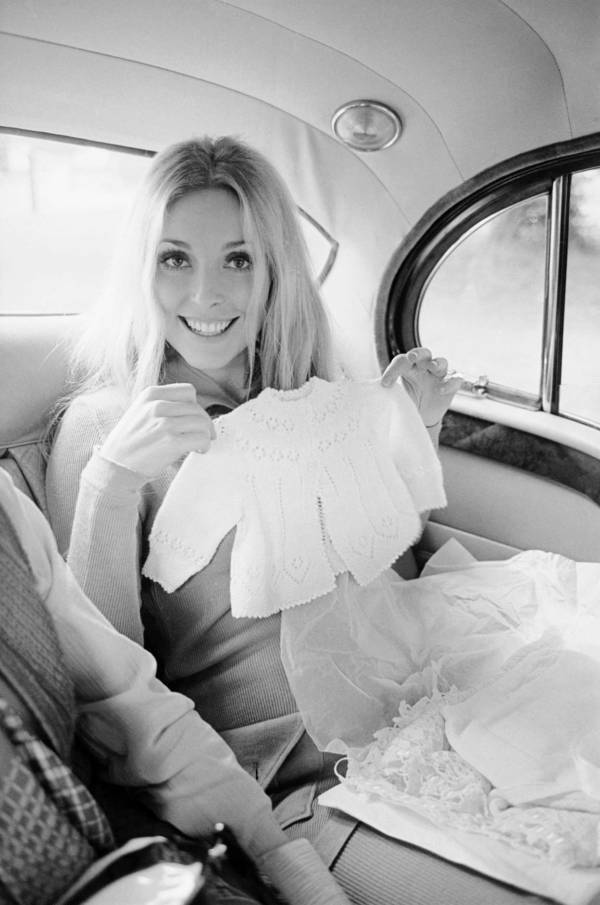
Terry O’Neill/Iconic Images/Getty ImagesA pregnant Sharon Tate holds baby clothes not long before her murder.
In the commonly-accepted version of events, Sharon Tate and her companions (ex-lover and friend Jay Sebring, Roman Polanski’s friend Wojciech Frykowski, and his girlfriend Abigail Folger) were doomed by a cruel twist of fate.
The story goes that Charles Manson had sent his followers to kill everyone living at 10050 Cielo Drive in Los Angeles on the night of August 8, 1969, because it was the house in which Terry Melcher had lived when he and Manson were last in contact. However, this version of events ignores one important detail.
According to witnesses at trial, on an afternoon in March, two months after Melcher had moved out, Manson arrived at the house looking for him. Told the house was under new ownership, Manson left, but not before new resident Sharon Tate had come to see who was at the door — which could put to rest the myth that Manson sent his followers to kill Melcher five months later.
Indeed, the truth about what sparked the Tate-LaBianca murders is stranger and more convoluted than the narrative put forth at court, so much so that prosecutor Vincent Bugliosi held back the full story both at trial and in his iconic book on the case (1974’s Helter Skelter) for fear that the jury wouldn’t actually believe it.
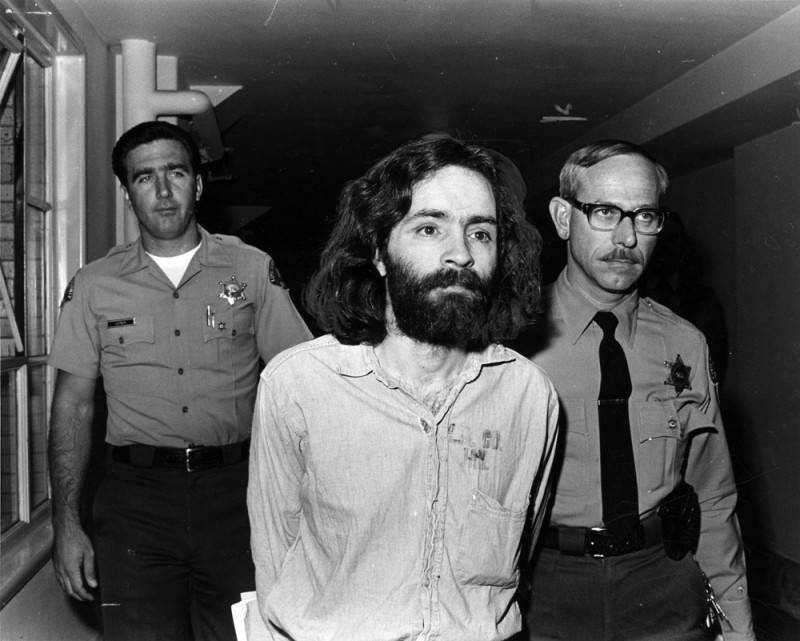
Los Angeles Public LibraryCharles Manson during his trial for the Tate-LaBianca murders on October 6, 1970.
Nevertheless, here it is.
Two weeks before the murder of Sharon Tate, Charles Manson’s contacts within the Straight Satans motorcycle gang complained that the Family had sold them a bad batch of mescaline and demanded their money back. Manson, who had already spent the money and had not made the mescaline, sent two of his girls and another associate, small-time actor and guitar player Bobby Beausoleil, to get the money from their supplier, a music teacher and part-time chemist named Gary Hinman.
After beating Hinman for hours without effect, Beausoleil called for backup. Manson arrived, threatening Hinman himself before slicing the man’s face with a sword. Then, after Manson left, Beausoleil continued to unsuccessfully torture Hinman into giving up the money.

Bettmann/Contributor/Getty ImagesCharles Manson leaves court after deferring a plea on murder charges. December 11, 1969.
At the end of three days (during which time Atkins and Brunner joined in on the torture), he called Manson once again to explain the situation. “Well,” Manson replied, “You know what to do,” at which point Beausoleil stabbed Hinman to death with a bowie knife as Atkins smothered him with a pillow.
While Charles Manson himself claimed he never gave the order to kill anyone, he did tell Beausoleil to stage the crime scene such that it looked like the work of the Black Panthers, prompting Beausoleil to write the word “Political Piggy” and draw a paw print on the wall in Hinman’s blood.
Whether this was intended simply to throw police off the trail or to actually incite the race war that Manson supposedly believed was coming and referred to as “Helter Skelter” is debatable. But either way, the plan did not work. Beausoleil stole Hinman’s car, which broke down on his way up the California coast. When police found him with the victim’s vehicle and the murder weapon, they knew they had their man.
Was Charles Manson Serious About “Helter Skelter” And Was He Truly Responsible For The Manson Family’s Murders?
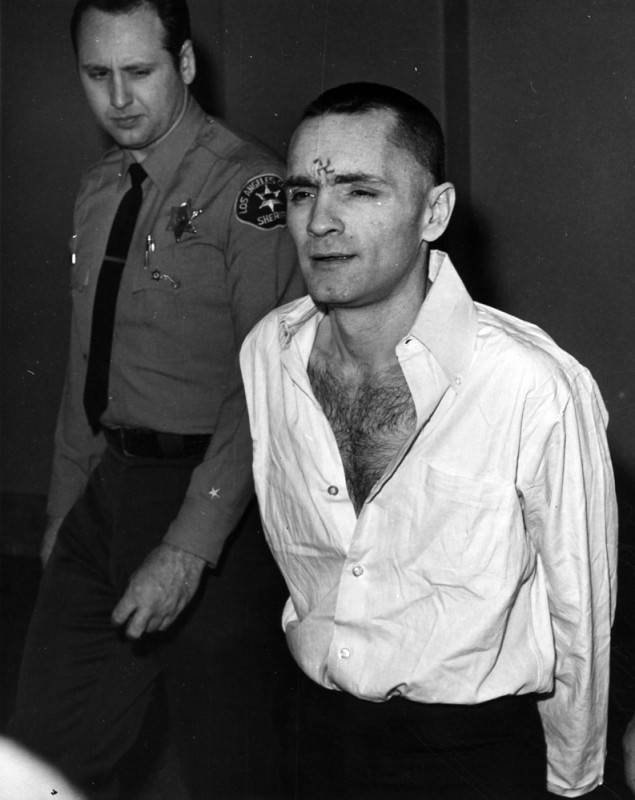
Los Angeles Public LibraryA swastika visible on his forehead, Charles Manson is escorted out of court on March 11, 1971.
According to Bugliosi at trial and in his aptly-titled book on the case, Helter Skelter, “Helter Skelter” was the core of Charles Manson’s ideology and “the motive for the murders.”
Having by this point moved the Family out to Death Valley, Manson had told his followers to expect an apocalyptic race war in which black people would rise up and overthrow the social order while members of the Family waited out the turmoil in an underground city beneath the desert. When the slaughter was over and black people realized they could not govern themselves, the Family would reemerge to rule over the new world, with Manson as the supreme leader.
You could confirm the truth of this for yourself, Charles Manson said, if you played the Beatles’ “White Album” and really listened to the lyrics, especially songs like “Piggies,” “Blackbird,” “Rocky Raccoon,” and, of course, “Helter Skelter,” all of which Manson believed were secret messages aimed at him and his followers.
With this in mind, all of the Manson Family murders were intended to kick off the Helter Skelter chaos that Manson predicted by making it appear as if the first strikes in the race war had begun and that the Family’s victims were the war’s first casualties.
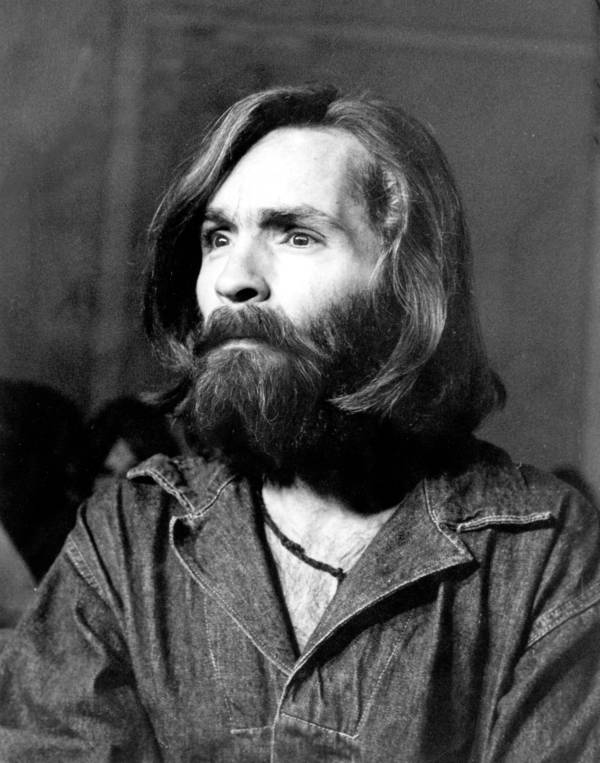
Michael Ochs Archives/Getty ImagesPhoto of Charles Manson at trial. 1970.
Manson, for his part, later claimed that this was all “bullshit,” a fantasy made up out of whole cloth in order to make him appear crazy. This assertion itself is somewhat contradicted, however, by Manson’s own statement to his arresting officer that the officer would be better off saving his own life and leaving Manson alone because “blackie” was going to rise up and start killing white people soon.
In reality, it appears as though the truth behind Charles Manson’s motives once again lies somewhere between the prosecution’s story and Manson’s own (which itself varied).
For starters, by all witness accounts, the idea to commit more killings after the Hinman murder did not even originate with Manson himself. In fact, some accounts state that the idea reportedly started among Family members at Spahn Ranch immediately following news of Beausoleil’s capture and the intention was to make the police believe that Hinman’s “real killers” were still at large. The choice of the Cielo Drive house itself may have been completely secondary to the crime, apparently derived from Manson’s suggestion that the Family should merely attack somewhere like where Melcher used to live.
However, while Charles Manson certainly expressed racist ideas and did proclaim various versions of the apocalyptic Helter Skelter prophecy, it’s an open question as to how much he truly believed the story he was selling. A parallel explanation for Manson’s actions is that, even if he himself did not actually believe his Helter Skelter story, it was important that his followers did.
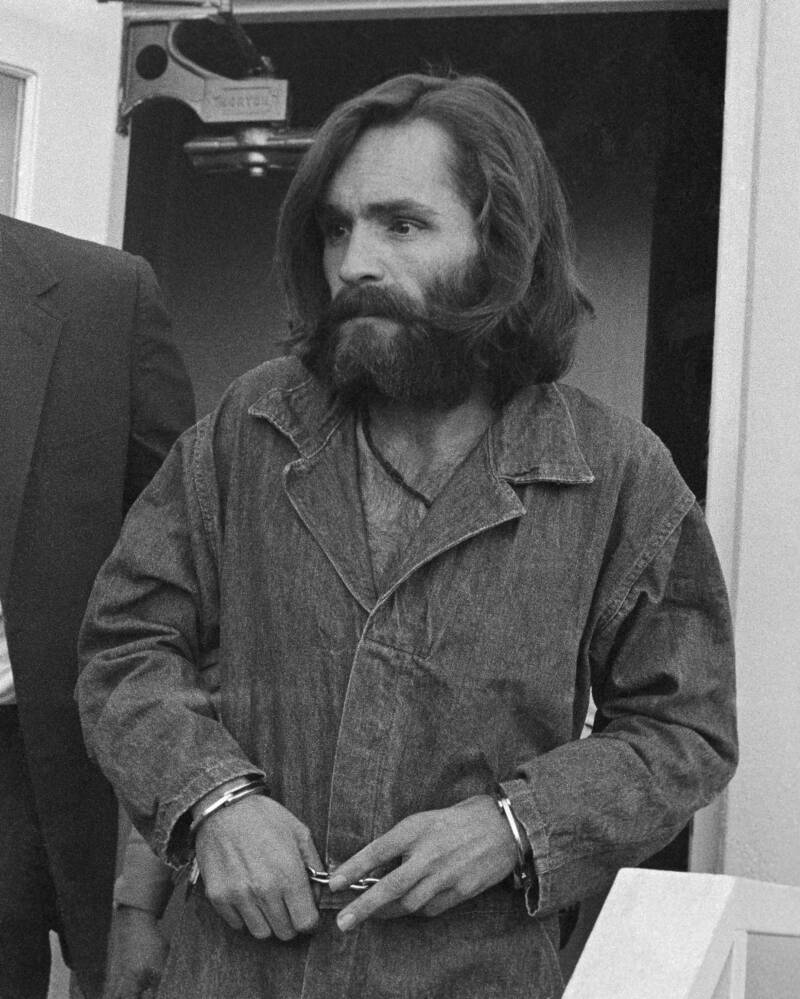
Bettmann/Contributor/Getty ImagesCharles Manson arrives at the Inyo County Courthouse. December 3, 1969.
With the failure of his record deal, his promises of success to his followers began to wear thin. In order to maintain control over the Family, he had to try other methods: isolating them in the desert, threatening them with violence and death if they abandoned him, and telling them that they were so important that the biggest rock band in the world was secretly communicating with them.
In the end, it was Manson’s lack of control over the group — first in their concocting further murders and then in their bragging about their deeds behind bars — that led to his downfall. Some have even argued that the emphasis on Manson as a mastermind was a convenient defense for a group of largely middle-class white kids who could lay the blame for their actions at the feet of what may have been a nearly illiterate (accounts vary) and mentally ill drifter.
What Happened To Charles Manson? From Cult Leader To Cultural Icon

Los Angeles Public LibraryDeputy sheriffs escort Charles Manson during his trial on April 19, 1971.
No matter which story of the murders is actually true, soon Manson finally found the celebrity he had sought — and he rose to the occasion. He gave interviews to groups like the Process Church of the Final Judgement, contributing a column for their magazine’s “Death” issue.
At trial starting in June 1970, he tried to act as his own attorney and began to engage in increasingly theatrical performances in court. He and three followers on trial spoke in unison, struck cross poses at the same time, and demanded to be killed if they could not get a fair trial.
He carved an “X” into his forehead to “remove [himself] from your world.” He said that it was Nixon, not he, who was guilty and asked the court to consider that, if he was society’s garbage, he was the product of a truly rotten society.
In the end, he was found guilty and sentenced to death, which was commuted to life imprisonment after California effectively abandoned capital punishment. After nearly 50 years behind bars, during which time he was denied parole more than a dozen times, Charles Manson died in prison on November 19, 2017, at age 83.
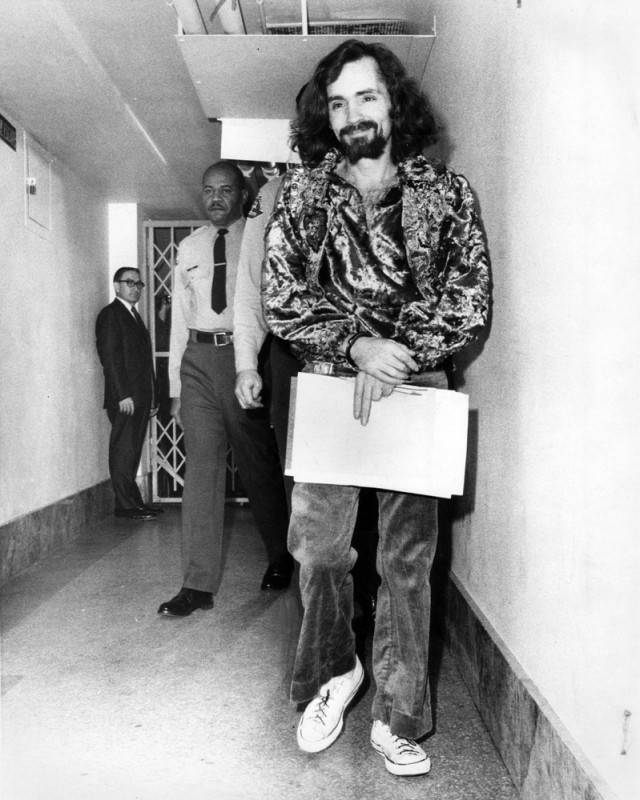
Los Angeles Public LibraryActing as his own attorney, Charles Manson makes his way to court on January 13, 1970.
In the decades before he died, however, he attained and maintained the fame he’d always wanted in his days as an aspiring musician before the murders.
In some ways, thanks to America’s collective reaction to his crimes, we may have proved him right. Perhaps more than any actual Manson Family member, it is the rest of us who have most bought into the idea of Charles Manson and his pervasive, mythic power as a nation’s boogeyman — from Brian Hugh Warner deciding to call himself “Marilyn Manson” to the FBI’s mistaken belief that Manson was behind the unrelated 1977 murder of Laurence Merrick.
And thanks to his notorious reputation, his music was finally released. Even after his death, devoted fans and followers buy and sell his writings, drawings, and artwork — such as string art selling for $65,000 that’s said to be “a portal that can…reconnect you with Charlie no matter where he is now.”

Vernon Merritt III/The LIFE Picture Collection via Getty Images/Getty ImagesCharles Manson sits in court during his indictment for the Tate murders.
From a nobody who wanted to get noticed to a household name, we gave Charles Manson what he always wanted. He rose from nothing and found fame. To this day, his myth remains undeniable. Of all the serial killers and other notorious criminals of the 20th century, Charles Manson — part rock star, part guru, part madman — is the most all-American.
After learning the true story of Charles Manson, read up on Charles Manson’s son Valentine Michael Manson. Then, discover the most enlightening and disturbing Charles Manson quotes and facts.
